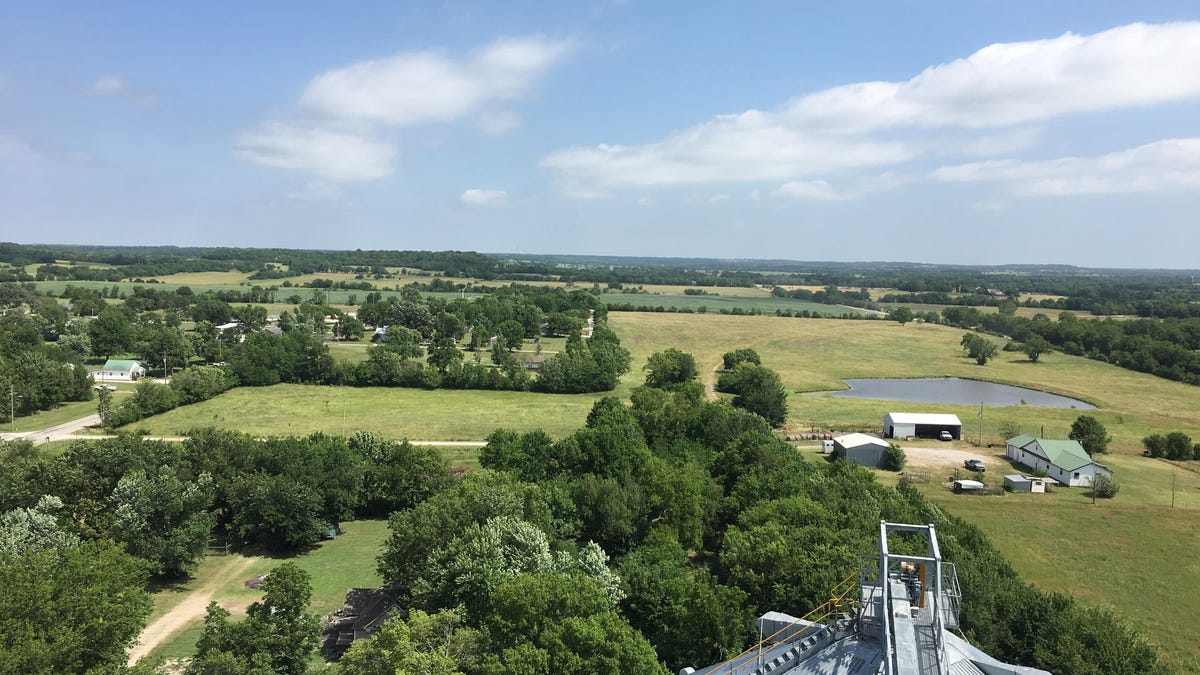As COVID-19 ravages the world, closing the digital divide is more critical than ever
CNET is continuing its series that looks at why the broadband gap persists and how we go about closing it.

A small wireless internet provider called Wave Wireless wants to offer access to a county in Kansas.
If there's one thing the coronavirus has shown, it's that we all need high-speed internet access to survive in an age when everyone's stuck at home. Unfortunately, at least 14.5 million Americans don't have that access (a number that may be artificially low).
It's a staggering number, especially when you consider how essential online access is for work, school and just about every facet of our lives. Broadband access is as critical as running water or electricity, even if it isn't anywhere near as available.
The problem cuts across different groups, from farmers in Iowa where service providers find it too costly to build out networks, to impoverished families in Manhattan who can't afford internet service. It's an issue virtually everyone thinks needs to be solved -- even if nobody can agree on a solution.
That's where CNET comes in. We previously explored the issue of the broadband gap in our series, Crossing the Broadband Divide back in 2018, and dived into it over the summer through our Daily Charge podcast (episodes posted below).
But with President Joe Biden vowing to spend $20 billion on connecting more Americans and the pandemic shining a new light on the importance of digital access, it's critical that we took another look at the enormity of the problem and what it will actually take to fix it.
The series kicks off with several stories over the next few weeks, starting with a look at how Appalachia represents a big test of Biden's ambitious plans. But this isn't a one-and-done project. Expect to read more stories -- short and long -- that chronicle how the country is working toward that ideal of making broadband access universal and the challenges it faces.
Until then, you can get more context around this problem -- and some of the potential solutions -- in a special six-part series of The Daily Charge podcast that includes interviews with industry experts and executives to get their perspectives on how to address the digital divide.
Episode 1: How did we get here?
CNET senior reporter and regulatory expert Maggie Reardon sets the stage with a look at the past issues and regulatory maneuvers that've created the gap we see today. (Aug. 24)
Episode 2: Why it's still a problem
Internet Innovation Alliance Chairman Bruce Mehlman discusses some of the political, regulatory and technical hurdles we face. (Aug. 25)
Episode 3: A look at the National Broadband Plan
Blair Levin, who served as the executive director in charge of producing the National Broadband Plan under the Obama administration, discusses what's changed since the plan debuted in 2010. (Aug. 26)
Episode 4: What about wireless?
Verizon Chief Technology Officer Kyle Malady discusses cellular's role in getting more people access to the internet.
Episode 5: Is 5G the answer?
Qualcomm's Dean Brenner, senior vice president of spectrum strategy and technology policy, and Alice Tornquist, vice president of government affairs, discuss how 5G fits into the solution. (Aug. 28)
Episode 6: How do we get out of this jam?
Morgan Kurk, chief technology officer of infrastructure provider Commscope, discusses how current technology can help close the gap, but how political hurdles still need to be cleared. (Aug. 29)

